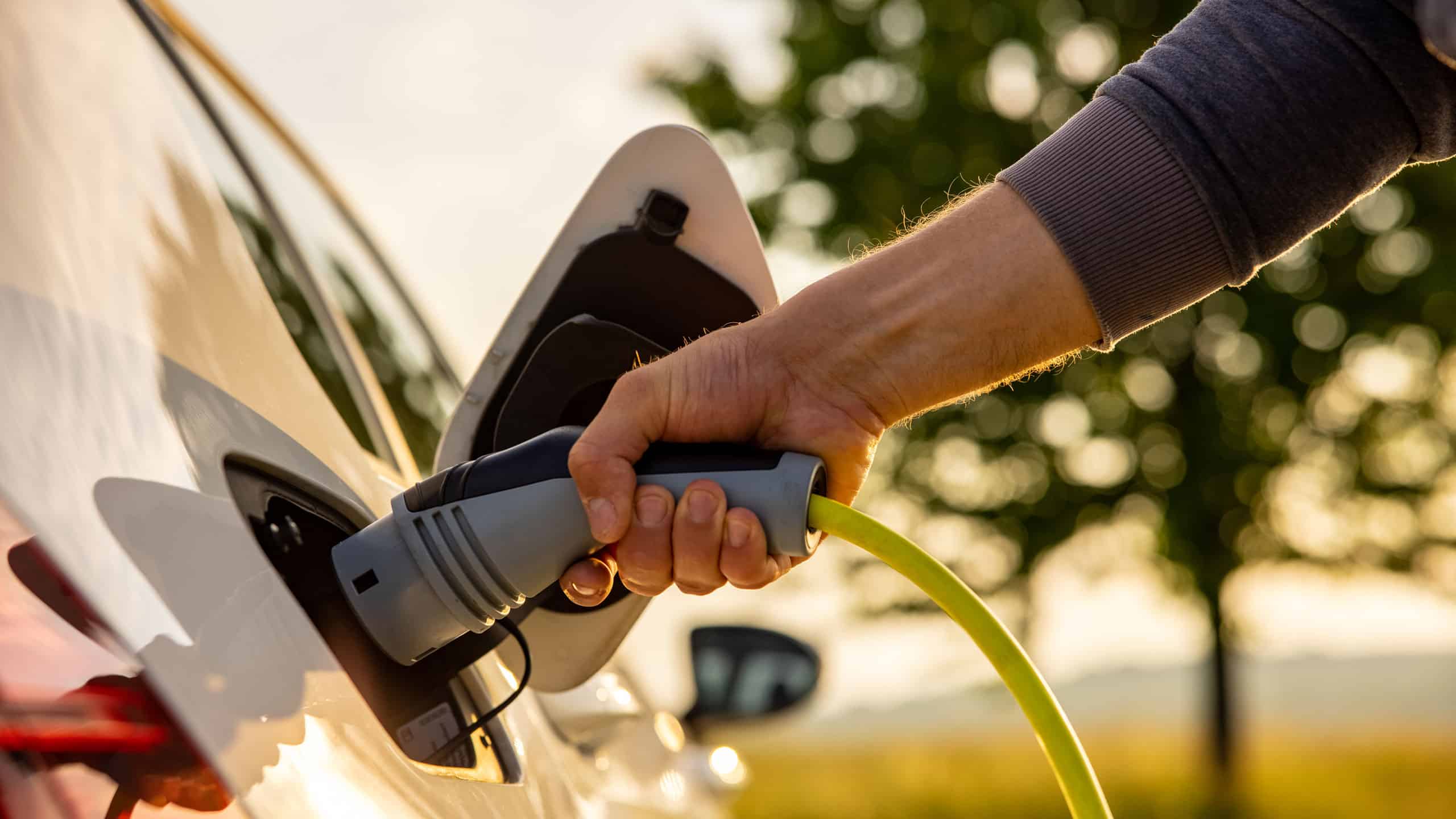
Three federal tax credits may be available to help offset your cost to purchase certain clean vehicles (including electric, plug-in hybrid, and fuel cell vehicles).
The new clean vehicle tax credit can be either a personal or a general business tax credit, depending on whether the vehicle is used in a trade or business. The previously-owned clean vehicles tax credit is a personal tax credit. The qualified commercial clean vehicles tax credit is a general business tax credit. A qualified commercial clean vehicle tax credit is not allowed with respect to a vehicle for which a new clean vehicle tax credit was allowed. These credits are nonrefundable if they exceed your tax liability. An unused general business tax credit can be carried forward to a later year.
New clean vehicle tax credit
Starting in 2023, a personal or general business tax credit of up to $7,500 is available for the purchase of new clean vehicles meeting certain requirements (including electric, plug-in hybrid, and fuel cell vehicles). A credit of $3,750 is available if a critical minerals requirement is met, and a credit of $3,750 is available if a battery components requirement is met. (For vehicles placed in service from January 1, 2023, through April 17, 2023, the credit allowed varied from $3,750 to $7,500 depending on the battery capacity of the vehicle, rather than on these two requirements.) Fuel cell vehicles that have final assembly within North America can qualify for the credit without regard to these two requirements.
Details
The vehicle
The critical minerals requirement is that the percentage of the value of critical minerals contained in the battery that were extracted or processed in the U.S. or in any country with which the U.S. has a free trade agreement in effect, or recycled in North America, is equal to or greater than the applicable percentage. The applicable percentage is 40% for a vehicle placed in service from April 18, 2023, through December 31, 2023, 50% in 2024, 60% in 2025, 70% in 2026, and 80% after 2026. For this purpose, a vehicle is generally considered place in service on the date the taxpayer takes possession of the vehicle.
The battery components requirement is that the percentage of the value of the components contained in the battery that were manufactured or assembled in North America is equal to or greater than the applicable percentage. The applicable percentage is 50% for a vehicle placed in service from April 18, 2023, through December 31, 2023, 60% in 2024 or 2025, 70% in 2026, 80% in 2027, 90% in 2028, and 100% after 2028.
In addition, the vehicle:
- Cannot be acquired for resale
- Must be manufactured by a qualified manufacturer
- Must be manufactured primarily for use on public roads and highways and have at least 4 wheels
- Must weigh less than 14,000 pounds
- Must be propelled to a significant extent by an electric motor with a capacity of not less then 7 kilowatt hours and is capable of being recharged from an external source of electricity, or be a qualified fuel cell vehicle (i.e., propelled by power derived from one or more cells that convert chemical energy directly into electricity by combining oxygen with hydrogen fuel)
- Must have final assembly in North America
The credit is not available for vehicles with a manufacturer’s suggested retail price (MSRP) higher than $80,000 for vans, sports utility vehicles, and pickups, or $55,000 for other vehicles (generally, passenger automobiles). For this purpose, the MSRP is the base retail price suggested by the manufacturer, plus the retail price suggested by the manufacturer for each accessory or item of optional equipment physically attached to the vehicle at the time of delivery to the dealer. It does not include destination charges or optional items added by the dealer, or taxes and fees.
You can check the eligibility of vehicles for the credit at fueleconomy.gov. Final confirmation of vehicle qualification should be done at the time of purchase. The seller must provide you with a report about a vehicle’s eligibility at the time of sale.
Purchaser’s income limitation
The credit is generally not available if the modified adjusted gross income (MAGI) of the purchaser for the taxable year or the preceding taxable year (whichever is less) exceeds $150,000 ($300,000 for joint filers and surviving spouses, $225,000 for heads of household). The income limitation does not apply to corporations subject to the corporate income tax. In the case of a partnership or S corporation, the credit is allocated to the partners or shareholders, respectively, and the income limitation is applied to those individuals.
Personal or general business tax credit
The new clean vehicle tax credit can be either a personal or a general business tax credit, depending on whether the vehicle is used in a trade or business. If the vehicle is used 50% or more for business, the credit is treated as a general business tax credit; otherwise, the credit is allocated between personal and business use. The credit is nonrefundable if it exceeds your tax liability. An unused general business tax credit can be carried forward to a later year.
Transfer of credit to dealer
Starting in 2024, an individual can elect to transfer the credit to the dealer as payment for the vehicle.
Termination of credit
The credit is not available after 2032.
Previously-owned clean vehicles tax credit
Starting in 2023, a personal tax credit equal to the lesser of $4,000 or 30% of the sales price is available to individuals for the purchase of certain previously owned clean electric vehicles from a dealer. The credit is available only for the first transfer of the vehicle after August 16, 2022, to a person other the person with whom the original use of the vehicle commenced (purchaser will need to check the sales history of the vehicle).
The credit is not available for vehicles with a sales price exceeding $25,000. The credit is not available if the purchaser’s MAGI for the taxable year or the preceding taxable year (whichever is less) exceeds $75,000 ($150,000 for joint filers and surviving spouses, $112,500 for heads of household).
Details
The Vehicle
- Must be manufactured by a qualified manufacturer
- Must be manufactured primarily for use on public roads and highways and have at least 4 wheels
- Must weigh less than 14,000 pounds
- Must be propelled to a significant extent by an electric motor with a capacity of not less then 7 kilowatt hours and is capable of being recharged from an external source of electricity, or be a qualified fuel cell vehicle (i.e., propelled by power derived from one or more cells that convert chemical energy directly into electricity by combining oxygen with hydrogen fuel)
- Must have final assembly in North America
General eligibility of vehicles for the credit can be checked at fueleconomy.gov.
There are a number of other requirements that you and the previously-owned clean vehicle must meet:
- The model year must be at least 2 years earlier than the year in which you acquire the vehicle
- The original use of the vehicle commenced with some other person
- You cannot claim the credit if you can be claimed as a dependent by someone else
- You cannot claim the credit more than once during a 3-year period
- You must purchase the vehicle for use and not for resale
The credit is nonrefundable if it exceeds your tax liability.
Starting in 2024, an individual can elect to transfer the credit to the dealer as payment for the vehicle.
The credit is not available after 2032.
Qualified commercial clean vehicles tax credit
Starting in 2023, a general business tax credit of up to $7,500 ($40,000 if the vehicle weighs 14,000 or more pounds) is available for the purchase of a qualified commercial clean vehicle meeting certain requirements.
The credit is equal to the lesser of (a) 15% of the tax basis (generally, the purchase price reduced by any section 179 expense deduction) of the vehicle (30% if the vehicle is not powered by a gasoline or diesel internal combustion engine), or (b) the incremental cost of the vehicle. The incremental cost is the excess of the purchase price of the clean vehicle over the price of a comparable vehicle that is powered solely by a gasoline or diesel internal combustion engine.
Details
The Vehicle
- Must be acquired for use or lease by the taxpayer and not for resale
- Must be manufactured by a qualified manufacturer
- Must be manufactured primarily for use on public roads and highways, or is certain mobile machinery
- Must be propelled to a significant extent by an electric motor with a capacity of not less then 15 kilowatt hours (7 kilowatt hours for vehicles weighing less than 14,000 pounds) and is capable of being recharged from an external source of electricity, or be a qualified fuel cell vehicle (i.e., propelled by power derived from one or more cells that convert chemical energy directly into electricity by combining oxygen with hydrogen fuel)
A qualified commercial clean vehicle tax credit is not allowed with respect to a vehicle for which a new clean vehicle tax credit was allowed.
The tax basis of the vehicle is reduced by the amount of the credit allowed.
The credit is nonrefundable if it exceeds your tax liability. An unused general business tax credit can be carried forward to a later year.
The credit is not available after 2032.
IMPORTANT DISCLOSURES Broadridge Investor Communication Solutions, Inc. does not provide investment, tax, legal, or retirement advice or recommendations. The information presented here is not specific to any individual's personal circumstances. To the extent that this material concerns tax matters, it is not intended or written to be used, and cannot be used, by a taxpayer for the purpose of avoiding penalties that may be imposed by law. Each taxpayer should seek independent advice from a tax professional based on his or her individual circumstances. These materials are provided for general information and educational purposes based upon publicly available information from sources believed to be reliable — we cannot assure the accuracy or completeness of these materials. The information in these materials may change at any time and without notice.
Prepared by Broadridge Investor Communication Solutions, Inc. Copyright 2021.
